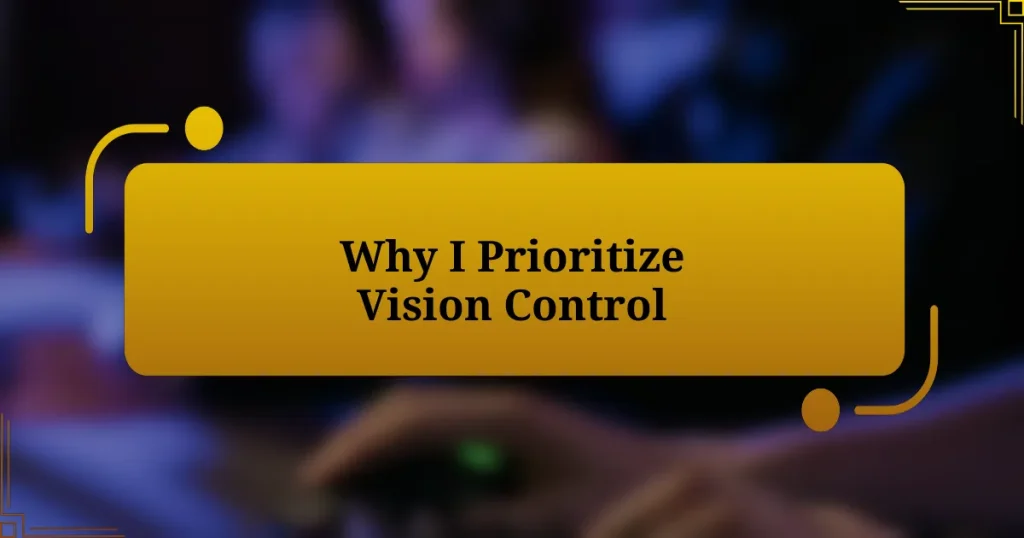Key takeaways:
- Vision control is essential for decision-making and team strategy, directly impacting game outcomes.
- Common mistakes include over-relying on teammates for vision and failing to adapt ward placements as the game progresses.
- Effective strategies include utilizing control wards, adjusting ward placements based on enemy movements, and prioritizing team communication regarding vision.
- Improving vision game involves placing wards in unconventional spots, enhancing team communication, and regularly checking the mini-map for enemy activity.
Author: Clara M. Ashford
Bio: Clara M. Ashford is an award-winning author known for her captivating literary fiction that explores the complexities of human relationships and the intricacies of personal identity. With a background in psychology and a passion for storytelling, Clara weaves rich narratives that resonate with readers on a profound level. Her debut novel, Whispers of the Heart, garnered critical acclaim and was shortlisted for the National Book Award. When she’s not writing, Clara enjoys hiking in the mountains of Colorado and volunteering at local literacy programs. She lives in Denver with her two adventurous dogs.
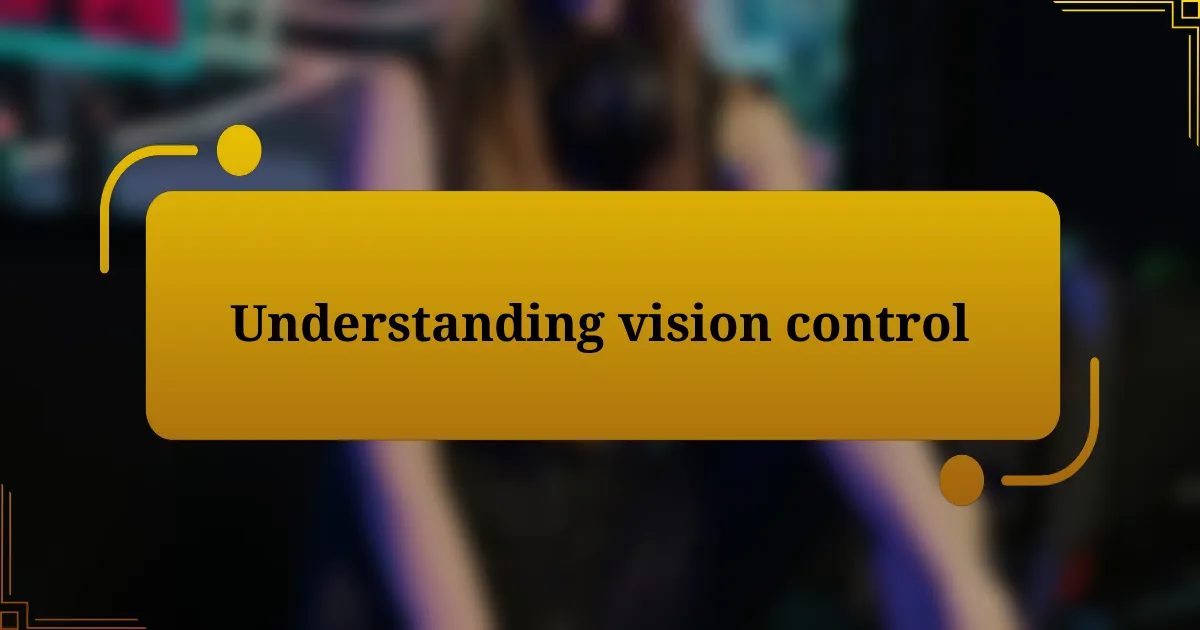
Understanding vision control
Vision control is crucial in “League of Legends” because it directly impacts decision-making and team strategy. I remember a game where my team lost a crucial fight simply because we underestimated the enemy’s movement, a mistake that could have been avoided with better vision control. How often have you thought, “If only we had seen that gank coming!”
Utilizing wards effectively can be the difference between victory and defeat. I often find myself reflecting on times when placing a single ward in the river led to spotting an enemy jungler, allowing my team to prepare and counter their plans. It’s fascinating how these seemingly small actions can turn the tide of a match, isn’t it?
Understanding where to place your wards and how to deny vision to the enemy is a skill that evolves with experience. I’ve learned that vision isn’t just about mapping out the entire game; it’s about predicting and reacting to the enemy’s moves. Have you ever noticed how a well-timed sweep can reveal critical information that shifts the game in your favor? This dynamic aspect of vision control makes every match feel fresh and engaging.
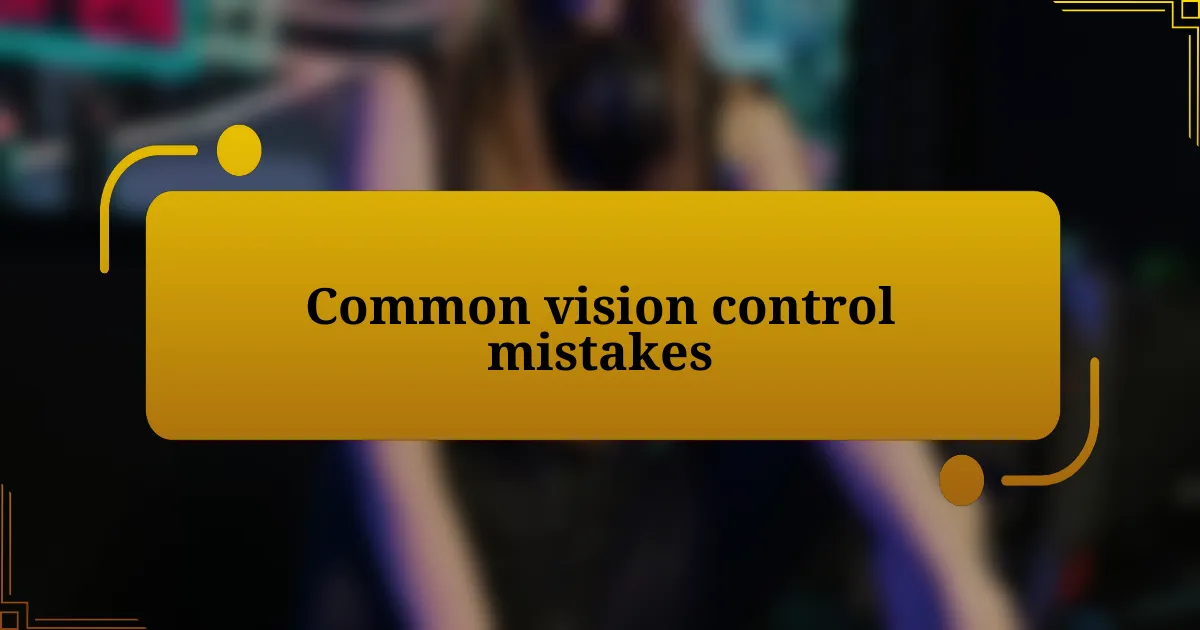
Common vision control mistakes
It’s easy to fall into the trap of over-relying on your teammates for vision. I know I’ve made the mistake of thinking “surely someone else will ward that bush,” only to be caught off guard by roaming enemies. This kind of complacency can cost you, as it places too much faith in others when a small personal effort could have made all the difference.
Another common mistake is neglecting to change ward placements as the game evolves. I vividly recall a match where I stuck to my old warding habits, only to realize too late that our team needed more vision near objectives rather than along the lanes. Have you ever experienced that sinking feeling when you know your wards are outdated, and the enemy suddenly takes Baron?
Lastly, disregarding vision denial is often overlooked, especially by newer players. Once, I watched as my team rushed into a fight without considering that the enemy could easily contest us because we hadn’t swept their wards. Prioritizing clearing enemy vision can shift the balance in your favor, making those moments feel exhilarating instead of regrettable.
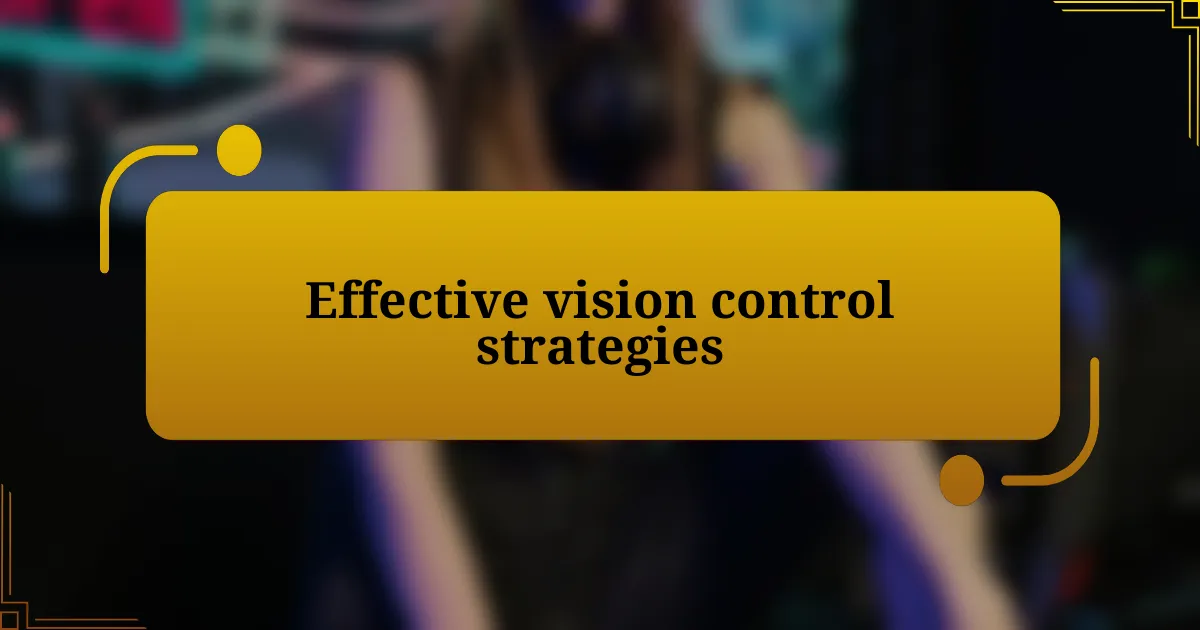
Effective vision control strategies
One effective strategy I’ve learned is to always carry control wards into each game. I remember a match where I purchased a control ward early, placing it strategically in the river brush. The enemy team was completely oblivious to my vision, allowing our jungler to secure a crucial dragon without any contest. Have you ever noticed how a single control ward can create such a strong advantage?
Another key aspect is to utilize the map effectively, adjusting your wards based on the flow of the game. There was a particularly intense game where I started warding heavily in the jungle when we noticed the enemy jungler constantly ganking our lanes. By shifting my wards deeper into their territory, we were able to anticipate their movements, turning the tides in our favor. It’s fascinating how just being proactive with your vision can lead to such momentum shifts.
Lastly, I can’t stress enough the importance of effective communication with your team regarding vision placement. I’ve been in games where simply calling out “I’ll ward the river” or “let’s clear enemy vision before fighting” transformed our approach to engagements. Wouldn’t it be great if all teams recognized how vital it is to align on vision control? A few well-placed words can lead to coordinated strategies that outsmart the enemy team, enhancing our overall gameplay.
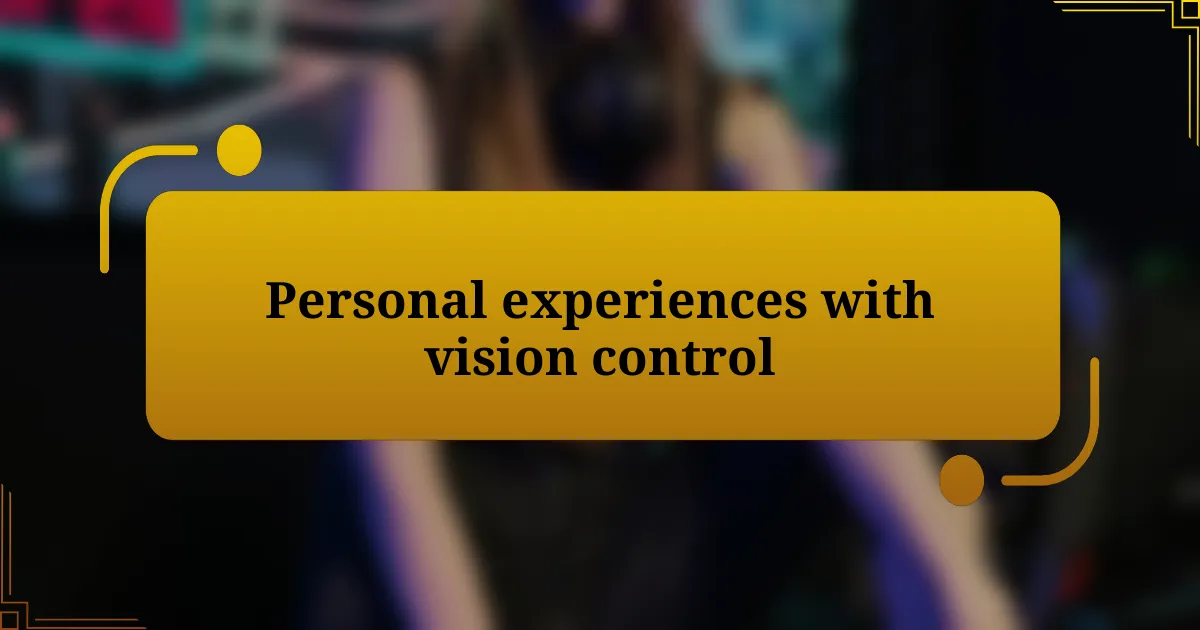
Personal experiences with vision control
One memorable experience I had with vision control was during a ranked match where I underestimated the enemy’s mobility. I placed a ward near our blue buff, thinking it would be enough to spot incoming threats. When the enemy team unexpectedly pounced, I realized that I had neglected the importance of warding their jungle entrances. That failure still reminds me how critical it is to think like the enemy when setting up my vision.
In another game, I found myself in a high-stakes situation where my team was on the verge of losing the Baron fight. Frantically, I threw down control wards around the pit and in the surrounding jungle, hoping to catch a glimpse of our opponents. The relief I felt when we spotted their jungler sneaking in was immense; it allowed us to reposition and take back control of the objective. Have you ever felt that adrenaline rush just from placing the right ward at the right time?
There was also a time when I decided to take vision control into my own hands during a close match with friends. I vividly remember stressing the need for clear communication and synchronized efforts. We neglected to ward during a few crucial moments, which cost us dearly. In that chaotic environment, I learned how vital it is for every team member to recognize their role in maintaining vision, turning teamplay into a shared responsibility. Have you experienced a moment where a lack of vision led to a missed opportunity? It’s eye-opening, isn’t it?
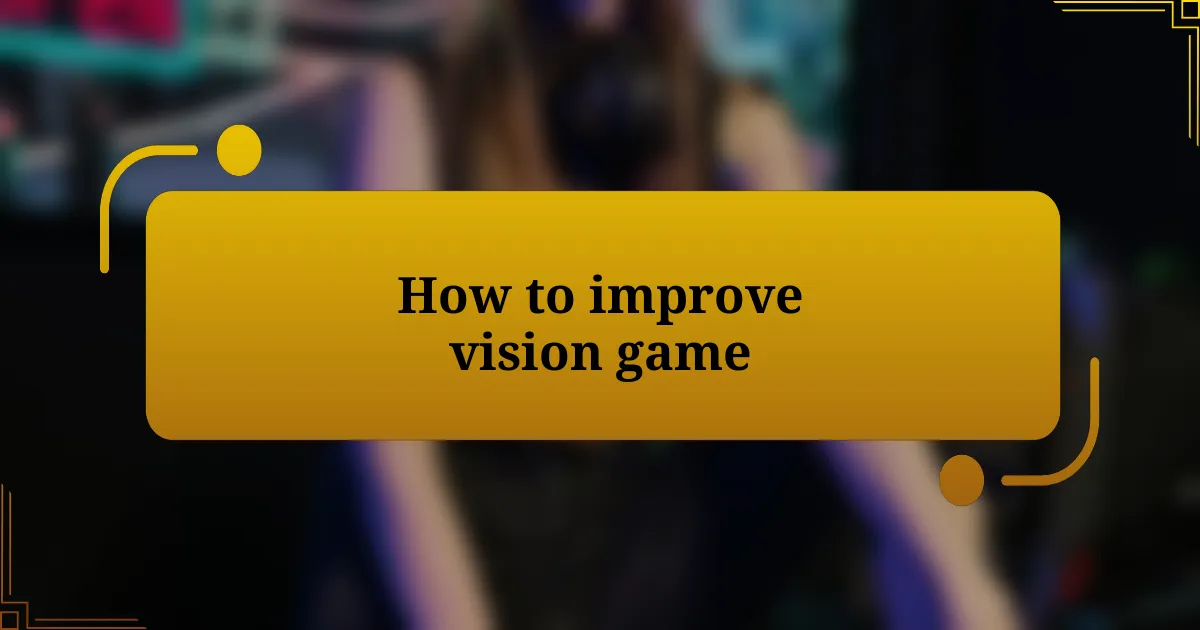
How to improve vision game
Improving your vision game in League of Legends requires consistent practice and a strategic mindset. One effective method is to develop a habit of placing wards in unexpected spots. I remember a match where I decided to ward the enemy’s dragon area instead of sticking to the usual spots. This unconventional approach caught them off-guard and really changed the momentum for my team. Have you tried placing wards in less conventional areas?
Another key aspect is effective communication with your team. I’ve experienced games where we lost crucial fights simply because we weren’t on the same page about vision priorities. By calling out when and where to set down wards, I noticed our overall awareness improved tremendously. How do you usually share vision plans with your teammates?
Moreover, regularly checking your mini-map can significantly enhance your vision game. There have been times when I’ve spotted an enemy on the move because I was diligent about glancing at the mini-map. This allowed me to alert my team and adjust our plays accordingly. Do you make it a point to keep an eye on the mini-map? It’s a small change that can lead to big victories.











